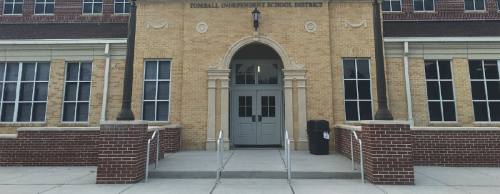The Texas Supreme Court ended years of lawsuits between over two-thirds of Texas school districts and the state when it declared the school funding process constitutional May 13.
Justice Don Willett delivered the unanimous opinion and validated the “recapture” or “Robin Hood” system in which property-rich districts are mandated by law to send a portion of their property tax revenue to the state to be redistributed among districts deemed property-poor.
“Our Byzantine school funding ‘system’ is undeniably imperfect, with immense room for improvement,” Willett wrote in the court’s 100-page opinion. “But it satisfies minimum constitutional requirements. Accordingly, we decline to usurp legislative authority by issuing reform diktats from on high, supplanting lawmakers’ policy wisdom with our own.”
Multiple lawsuits have been ongoing since 2011. That year, the Legislature cut public education funding by $5.4 billion in the aftermath of the Great Recession. In 2013, state District Judge John Dietz ruled the existing school finance system unconstitutional.
As a result of the 2013 ruling, the state legislators allocated $3 billion more for public schools and lowered the number of standardized tests required for high school students from 15 to five.
Dietz reopened the case in August 2014 in light of the changes but ruled again that the funding system was unconstitutional. However, the state appealed that decision, which resulted in the system being declared constitutional May 13.
This year will mark the first time Tomball ISD will collect enough revenue to meet recapture standards, TISD Chief Financial Officer Jim Ross said. The district held its first budget workshop to discuss the recapture laws and growth May 9.
“Tomball ISD has become a wealthy district,” Ross said. “[There’s] very little dependence on the state. We’re virtually self-funded at this point, so we’re having to pay recapture because we actually receive more than we’re allowed to keep.”
Ross said the district will have to return close to $1 million in property taxes after the district experienced a large increase in the number of taxpayers living in the district boundaries. In the past year, the district saw an 11 percent increase in residential property tax revenue, attributed to more people moving to the area, he said.
“Since 2013, our taxable value had gone from $6 billion up to $10 [billion],” he said. “So it’s a very large increase that we’ve experienced, and it’s been year after year. We’ve fared well.”
Ross said the district will continue to discuss recapture revenue for the next school year in June and July as the 2016-17 budget is finalized.





